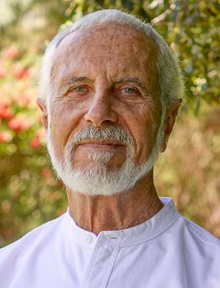Printed in the Fall 2023 issue of Quest magazine.
Citation: Quinn, William Wilson "The Provenance of Light" Quest 111:4, pg 36
By William Wilson Quinn
 In volume 1 of The Secret Doctrine, H.P. Blavatsky explains, “Darkness . . . is the eternal matrix in which the sources of light appear and disappear.” This refers to the periodic yet eternal interplay between pralaya as eternal matrix and manvantara, where light, as a core phenomenon of manifestation, endlessly appears, disappears, and reappears. She adds, however, that on our plane, the two “are interchangeable, and scientifically light is but a mode of darkness and vice versâ.”
In volume 1 of The Secret Doctrine, H.P. Blavatsky explains, “Darkness . . . is the eternal matrix in which the sources of light appear and disappear.” This refers to the periodic yet eternal interplay between pralaya as eternal matrix and manvantara, where light, as a core phenomenon of manifestation, endlessly appears, disappears, and reappears. She adds, however, that on our plane, the two “are interchangeable, and scientifically light is but a mode of darkness and vice versâ.”
Like much cosmogonic discourse in the first seven Stanzas, this last statement initially appears inscrutable. But rereading it with intuition and some intellectual wrestling, one may glean further clarity on the source and appearance of light, both in the universe and in the sentient beings who inhabit it. There HPB explains that light and darkness on our plane are both “phenomena of the same noumenon,” which can be described as “absolute darkness to the scientific mind, and but a gray twilight to the perception of the average mystic, though to that of the spiritual eye of the Initiate it is absolute light.”
Thus may we conclude with some certitude that this “interchangeability,” as HPB wrote, between the noumenal light and darkness actually interchange according to the varying capabilities of those who perceive light and darkness.
Concomitantly, one may view light and darkness, again on our plane, as a polarity. In this polarity, absolute light and absolute darkness are extremes on the axis of luminosity, which contains all gradations of lighter and darker in between these polar extremes as perceived by the scientific mind, the average mystic, and the initiate. Moreover, being phenomena conditioned by duality as a consequence of light’s manifestation on our plane, light and darkness, although opposites, are subject to synthesis in the sacred and ineffable process of the coincidence of opposites: syzygy. This absolute state is transcendent, unconditioned, and eternal.
Armed now with this metaphysical provenance of light and darkness, we may achieve a better understanding of both the physical attributes of light and its many applications to the state of being human.
To focus narrowly here on the spiritual application, every human being who begins treading a spiritual path, and especially those who begin ascending the higher spiritual path toward initiation, has thereby made a seminal choice to follow the via lucis, the path of light. The opposite path, the via obscura or path of darkness, is chosen by those who are subject to the selfish dictates of their outer persons or lower selves. Their fates are self-sealed. Through the lens of the law of correspondence, these two paths can be seen as microcosmic, physical manifestations of the macrocosmic, metaphysical processes and polarities discussed above.
The choice to follow the light made by wayfarers on the higher spiritual path comes toward the end of their long journeys through samsara in multiple incarnations, bound throughout to the wheel of death and rebirth. While such choice is made prior to achieving vimutti (a Pali word describing “liberation,” or release from the wheel of death and rebirth), it not only evidences a discrete goal but is integral to the overall sacred initiatic process. Once made, this choice dramatically enhances the wayfarer’s flowering life within a spiritual universe of increasing light, and its divine counterpart, love.
Sustained effort by the wayfarer on the path of light consciously to radiate and project loving-kindness to all sentient beings is today ever more necessary to offset the darkening pall of global angst, fear, and suffering. As our mentors the adepts do, it should become the wayfarer’s solemn duty to broadcast through all available means the hope and consolation that inheres in the path of light and love. By example, he or she should be a constant beacon to others radiating the pure light of love, as the profound inner beauty of prismatic emanations flowing from the atma and buddhi, the human being’s sixth and seven principles. Such entwined light and love form the serene and spiritually luminous brilliance that “embraces all in oneness” and provide the welcome solace of human loving-kindness that, on our level, simulates the warming rays of the sun, whose light nurtures and blesses everything it touches, indiscriminately and unconditionally.
William Wilson Quinn holds an MA (Divinity School) and PhD from the University of Chicago in the philosophia perennis. His doctoral dissertation on that subject was published by State University of New York Press as The Only Tradition. In the 1970s he was employed by the Theosophical Society, where he was editor of The American Theosophist (now Quest) magazine. His other books include Articles of Aquarius and The Chela’s Handbook. His fourth book, The Higher Spiritual Path, will be published by O-Books in December 2023.

